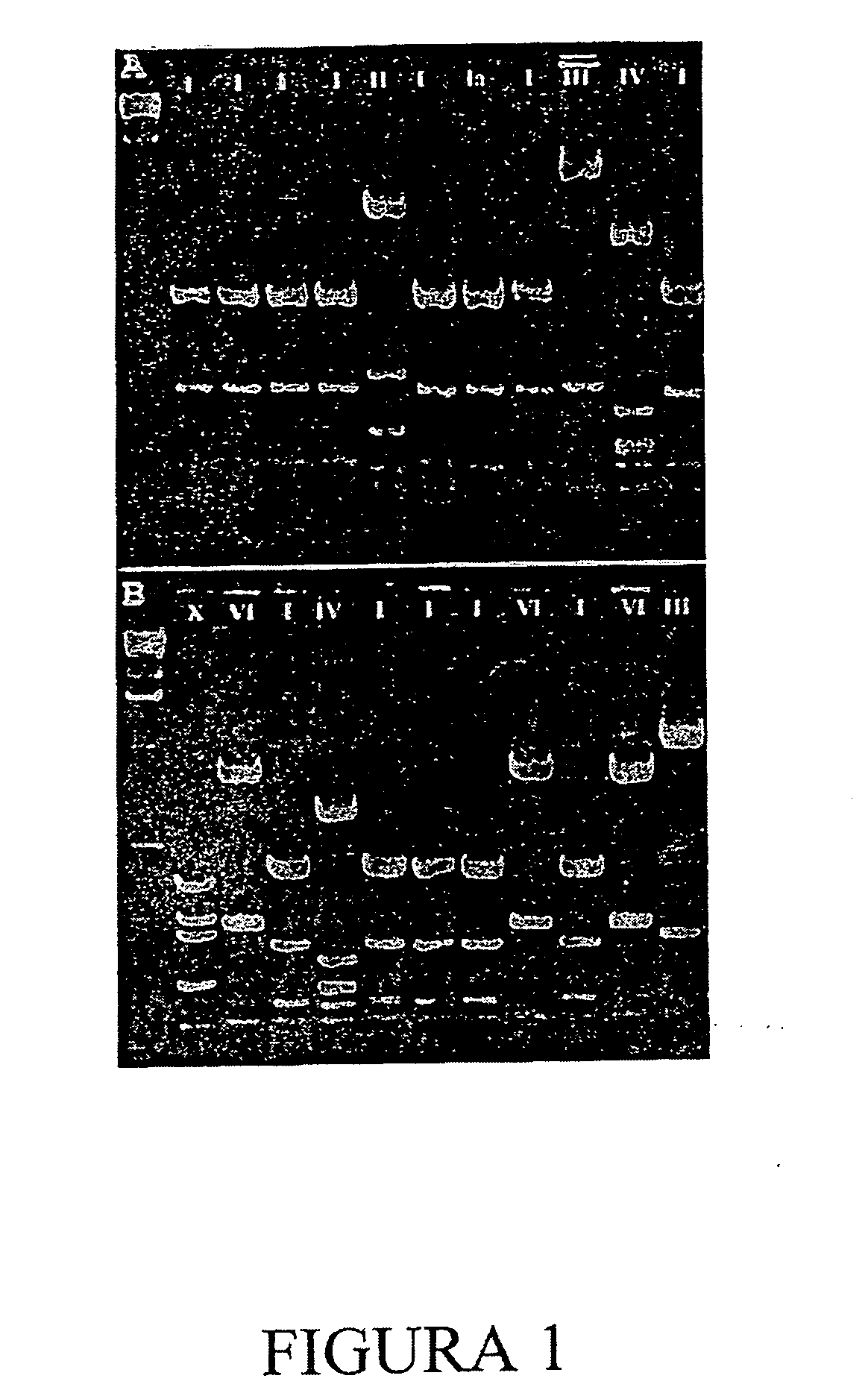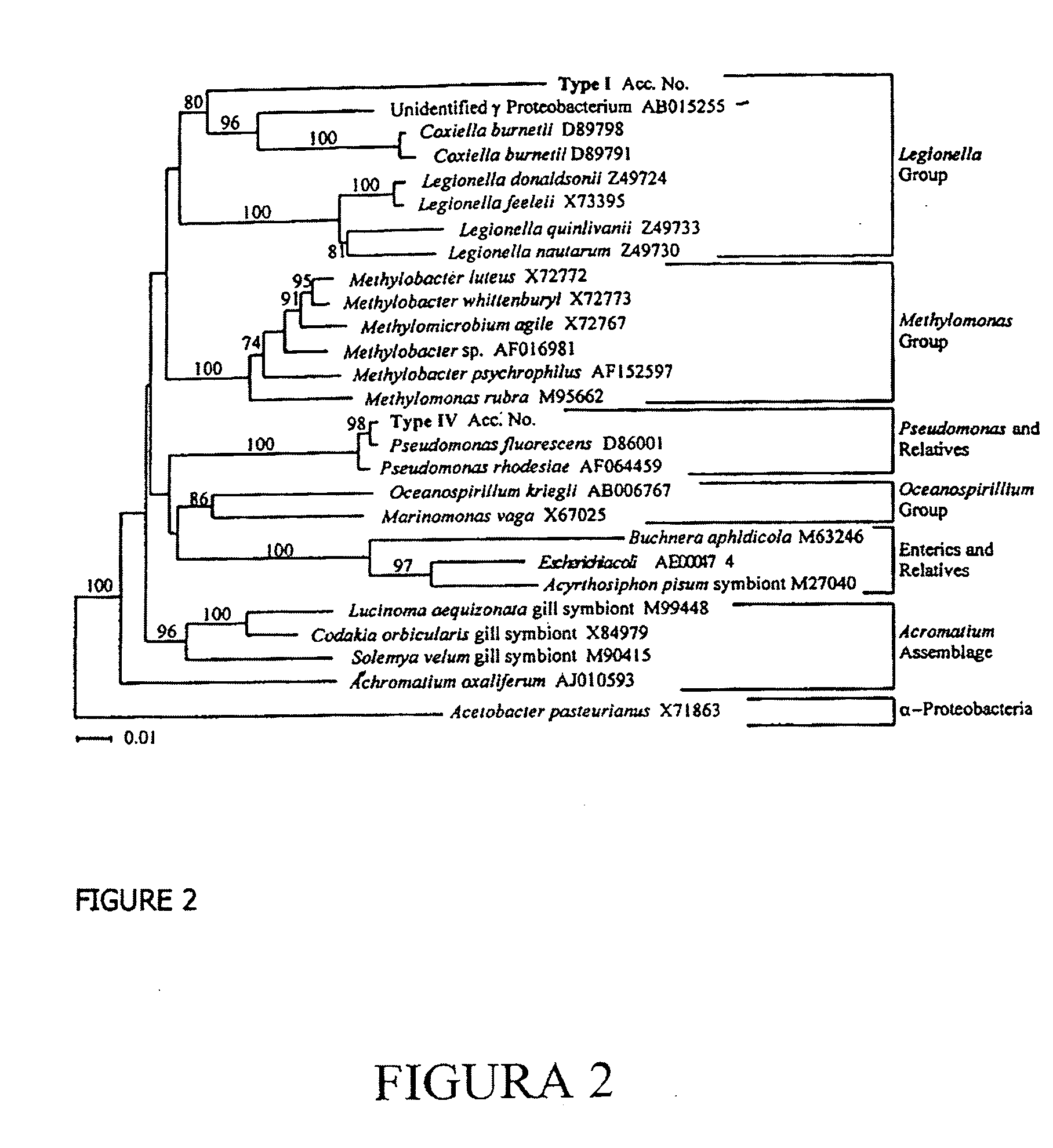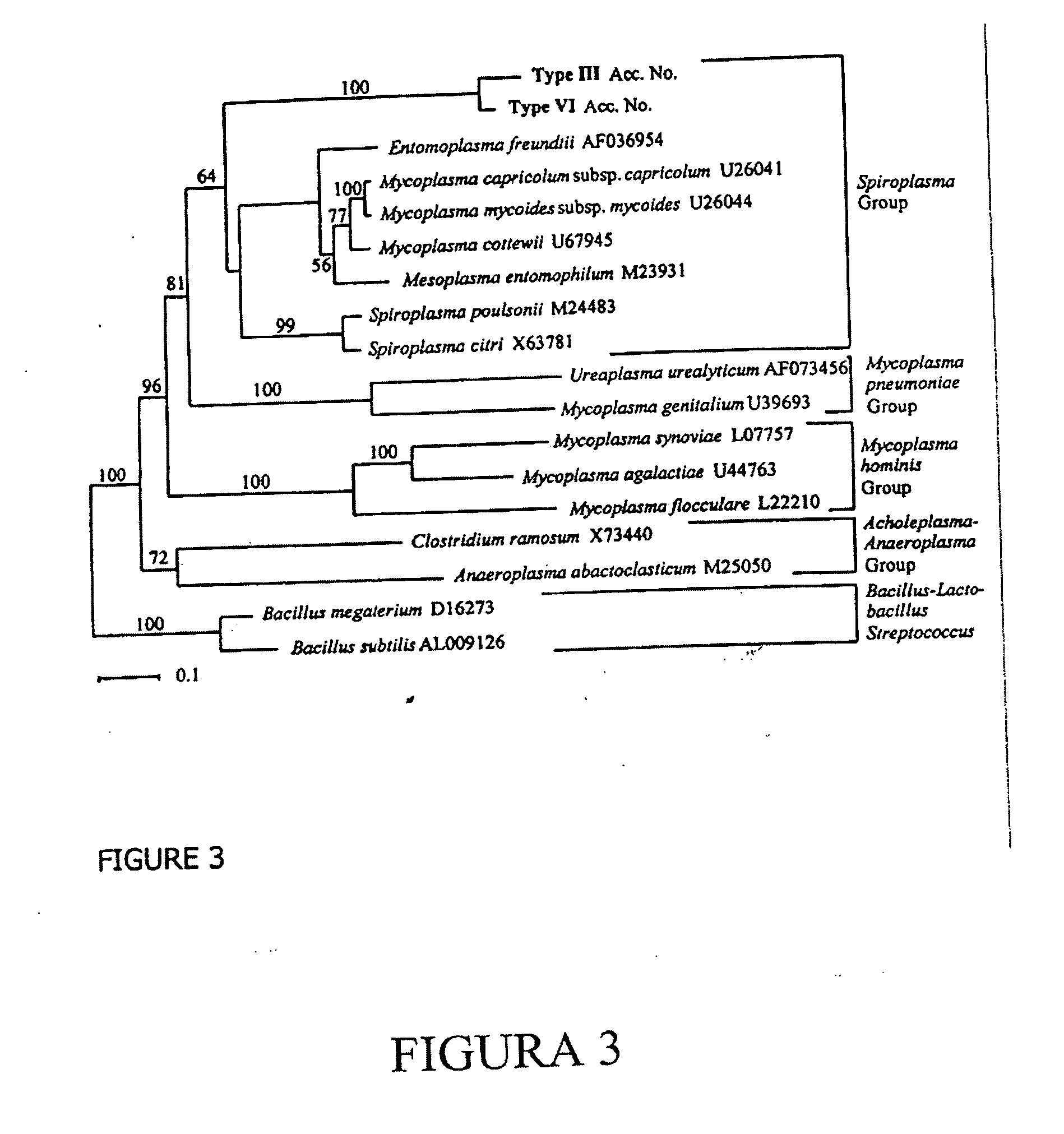Sequences from an endosymbiont and their uses
a technology of endosymbionts and sequences, which is applied in the field of sequences from endosymbionts and their uses, can solve the problems of unpalatable to predators, especially vulnerable to predation of adult ascidians, and fouling of external surfaces
- Summary
- Abstract
- Description
- Claims
- Application Information
AI Technical Summary
Problems solved by technology
Method used
Image
Examples
example 1
16S rDNA Analysis and RFLPs
DNA Isolation, 16S rDNA PCR Amplification and Cloning:
[0069] All DNA manipulations were performed under recognised standard conditions. To ensure all cells, both eukaryotic and prokaryotic, were broken open, the tissue was homogenised in liquid nitrogen in a sterile mortar and pestle (except the stolon cells which were used directly). DNA was isolated either using a GNOME DNA Isolation kit (BIO101, Vista, Calif.), or with the following protocol. Lysis buffer (100 mM Tris-HCI, 10 mM EDTA, 150 mM NaCI, 100 .mu.g / ml RNase A) was added to the frozen powder and allowed to thaw. The homogenised tissue was transferred to a sterile 1.5 ml centrifuge tube, lysozyme was added (200 pg / ml final concentration) and the sample incubated for 10 minutes at 37.degree. C. Proteinase K and SDS were added (400 pg / ml and 1% final concentrations, respectively) and the suspension incubated for a further 30 minutes at 37.degree. C. DNA was purified by two sequential extractions wi...
example 2
Phylogenetic Analysis
[0076] Compiled DNA sequences from two or more independent clones of each RFLP type sequenced were aligned with the RDP II database (Maidak B L, Cole J R, Lilburn T G, Parker C T Jr, Saxman P R, Farris R J, Garrity G M, Ohsen G J, Schmidt T M, Tiedje, J M. 2001. The RDP-II (Ribosomal Database Project). Nucleic Acids Res. 29, 173-174) using SEQUENCE MATCH and checked with CHIMERA CHECK to ensure that no sequence was chimeric. Phylogenetic inference of the novel 16S rDNA sequences was achieved by aligning the compiled 16S rDNA sequences with representative sequences obtained from the RDP II (Madiak et al., 2001) and GenBank using CLUSTALX (Thompson, J. D., Gibson, T. J., Plewniak, F., Jeanmougin, F. & Higgins, D. G. (1997). The ClustalX windows interface: flexible strategies for multiple sequence alignment aided by quality analysis tools. Nucleic Acids Research 24, 4876-4882.). Alignments were manually corrected and ambiguous positions removed. PAUP* 4.0b8 (Swoffo...
example 3
Cytochemical and Fluorescent Staining
Dissociation of Buds:
[0078] Esteinascidia turbinata stolon was obtained from Cadiz (Spain) and transferred to a marine aquarium at a water temperature of 24.degree. C. New generations of growing buds were collected from the stolon and washed several times in sterile filtered seawater. Bud tunic was removed using forceps under sterile conditions and nude buds (20-30) were washed four times in sterile seawater. Buds were placed in dissociation medium (sterile seawater plus 0.1% collagenase), and incubated for 3 hours at 27.degree. C. Bud tissue was dissociated by pipetting. To obtain a suspension of single cells, sample was left to decant on the bench for 3 minutes. The upper part of the sample was saved to other tube and cells concentrated by centrifugation at 1200 rpm / RT / 4 minutes. Cells were washed with 500 .mu.l of sterile seawater, centrifuged again and resuspended in 100 .mu.l of fixation media.
Cell Fixation and Slide Preparation for In Situ ...
PUM
| Property | Measurement | Unit |
|---|---|---|
| Fraction | aaaaa | aaaaa |
| Fraction | aaaaa | aaaaa |
| Fraction | aaaaa | aaaaa |
Abstract
Description
Claims
Application Information
 Login to View More
Login to View More - R&D
- Intellectual Property
- Life Sciences
- Materials
- Tech Scout
- Unparalleled Data Quality
- Higher Quality Content
- 60% Fewer Hallucinations
Browse by: Latest US Patents, China's latest patents, Technical Efficacy Thesaurus, Application Domain, Technology Topic, Popular Technical Reports.
© 2025 PatSnap. All rights reserved.Legal|Privacy policy|Modern Slavery Act Transparency Statement|Sitemap|About US| Contact US: help@patsnap.com



